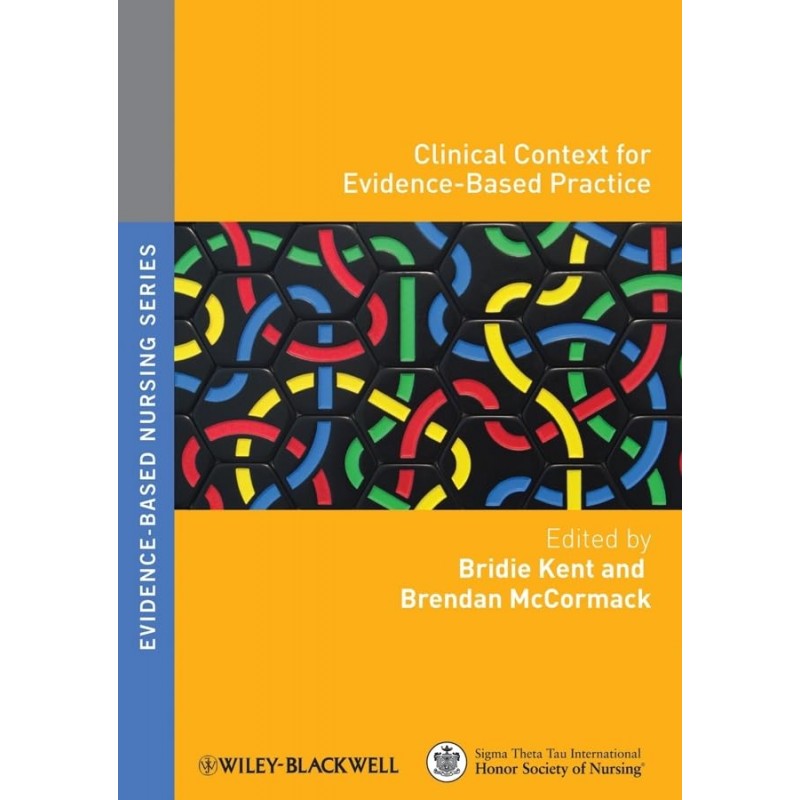- Reduced price

Order to parcel locker

easy pay


 Delivery policy
Delivery policy
Choose Paczkomat Inpost, Orlen Paczka, DHL, DPD or Poczta Polska. Click for more details
 Security policy
Security policy
Pay with a quick bank transfer, payment card or cash on delivery. Click for more details
 Return policy
Return policy
If you are a consumer, you can return the goods within 14 days. Click for more details
Clinical Context for Evidence-Based Practice provides insights into the key contextual issues to be considered in the implementation and assessment of evidence-based practice. Increasingly, implementation research is demonstrating that for evidence to be successfully implemented into practice, the context of practice needs to be considered.
Clinical Context for Evidence-Based Practice addresses professional, educational, and organizational contextual issues that impact on the implementation of evidence into practice and the bringing about of practice change. Practical strategies that have been used effectively to overcome these contextual issues in a range of healthcare settings are identified. Specific contextual issues in different care settings are also addressed e.g. acute care, primary health care, peri-operative settings, paediatrics, aged care, mental health, midwifery.
Each chapter is written by an internationally known and respected author, with experience of developing or reviewing contextual strategies that have an impact on the implementation and utilisation of research in practice. They explore how gaining a better understanding of context made a difference to the implementation process or outcome and address the potential to transfer different approaches to a range of healthcare settings.
Data sheet
Cover Image.
Notes on Contributors.
1 Introduction (Bridie Kent and Brendan McCormack).
References.
2 Context: overview and application (Bridie Kent and Brendan McCormack ).
Introduction.
Defi ning context.
Models and frameworks.
Context Assessment Index.
The Ottawa Model of Research Use.
Mode 2 thinking and context for evidence-based practice.
Global factors.
Conclusion.
References.
3 Making context work in primary health care (John Rosenberg and Debbie Kralik).
Introduction.
What is primary health care?
PHC as a set of strategies.
Assessing community need.
Engaging community.
Conclusion.
References.
4 Making context work in acute care (Alison Hutchinson and Tracey Bucknall).
Introduction.
The acute care context in relation to use of evidence in practice.
Characteristics of acute care contexts.
Evidence of the influence of acute care context on the use of research in practice.
Interventions and strategies to implement interventions.
Application of research evidence in the acute care context—a case example.
Conclusion.
References.
5 Making context work in pediatrics (Valerie Wilson).
Introduction
Medication safety.
Evidence from practice.
Overcoming the barriers to implementing evidence into practice.
Empowering families
Changing practice.
Conclusion.
References.
6 Making context work in the perioperative setting (Victoria M. Steelman).
Introduction.
Meta-analyses.
Randomized clinical trials.
Non-experimental studies.
Other sources of evidence.
Clinical practice guidelines and perioperative standards.
Summary.
Additional resources.
References.
7 Midwifery in the context of new and developing technologies (Marlene Sinclair).
Introduction.
Defi ning healthcare technology.
Defi ning birth technologies.
Understanding the complexity of technology and its relevance to midwifery.
Philosophical perspectives on birth technology.
Midwives and birth technology: major theoretical positions.
Birth technology competence.
Pregnant women’s use of the Internet in pregnancy.
Current context of midwifery care.
The midwifery model of care.
International definition of the midwife.
Global health: The World Health Organization.
Global statistics on Internet usage.
Inappropriate use of technology.
Use of technology during pregnancy and childbirth.
Conclusion: the Instantaneous Age and the role of modern technology in childbirth.
References.
8 Making context work in mental health (Dawn Freshwater and Jane Cahill).
Introduction.
Contextualizing mental health care.
The practice of reviewing: the evolution of scientific literature.
Interpreting the evidence.
Implications of “context” for practice: effect of peer review on practice.
Benchmarking practice: its place in the hierarchy of evidence.
Interpreting the evidence.
Implications of benchmarking practice for mental health practice.
Summary of how the different contexts of reviewing and benchmarking practices impact on mental health and practice environments.
Concluding comments.
References.
9 Making context work in aged care (Nadine Janes).
Introduction.
Aged care settings and providers.
Best practice in aged care.
A program of research on evidence-based aged care.
Infl uences on evidence-based aged care.
Summary: maximize relationships, minimize stress.
References.
10 Enabling context with policy (Gill Harvey).
Introduction
Evidence and policy making.
The policy-making process.
The place of evidence in the policy process.
From policy to practice.
Taking account of policy in implementation strategies.
Bridging the gaps between practice, policy, and research.
Summary.
References.
11 Context in context (Bridie Kent and Brendan McCormack).
Introduction.
Considering these individual contexts—context within contexts.
The impact of the changing world on contextual.
factors for evidence-based healthcare?
Way forward.
References.
Index.
Reference: 89185
Author: Susan Gross Forneris
Reference: 3257
Author: Stanisław Pużyński
Reference: 19022
Author:
Zalecenia Polskiego Towarzystwa Neonatologicznego
